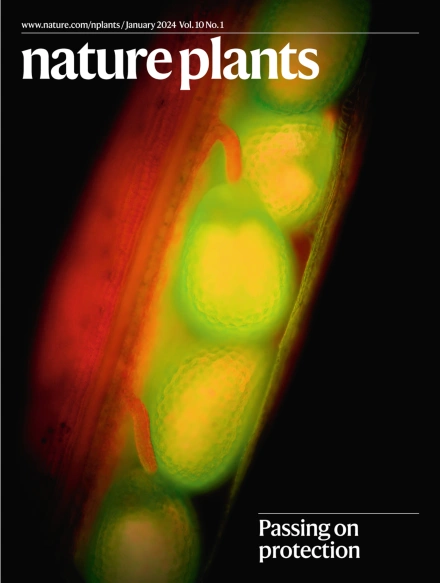Stem cell regulators drive a G1 duration gradient during plant root development.
IF 13.6
1区 生物学
Q1 PLANT SCIENCES
引用次数: 0
Abstract
Organogenesis relies on the coordination of cell proliferation with developmental programs. In meristems, where new plant organs initiate, the cell proliferation potential depends on stem cell regulators, but the mechanisms linking their local activity with the cell cycle machinery remain unknown. Here we show a positional gradient of G1 duration in the Arabidopsis root meristem spanning from ~2 h near the meristem boundary to more than 20 h in the early stem cell derivatives. Mutations in the stem cell regulatory PLETHORA (PLT) genes and the cell cycle RETINOBLASTOMA-RELATED 1 gene shortened G1 duration, abolishing the G1 duration gradient, whereas PLT2 overexpression increased G1 duration. Data-driven computer modelling supported the presence of an incoherent feed-forward loop. We found that PLT genes are drivers with simultaneous and opposing roles in maintaining stem cell activity and inhibiting G1 progression through a cascade involving the CDK inhibitor KRP5, a PLT target and RETINOBLASTOMA-RELATED 1. The G1 duration gradient is developmentally regulated and established after the emergence of lateral roots from the primary root and correlates with increased tolerance to genome damage. Our study establishes a previously undescribed proximal-distal G1 duration gradient during root development that is shaped by the balanced activity of stem cell maintenance and cell cycle regulators.干细胞调控因子在植物根系发育过程中驱动G1持续时间梯度。
器官发生依赖于细胞增殖与发育程序的协调。在分生组织中,新的植物器官启动,细胞增殖潜力依赖于干细胞调节因子,但将其局部活性与细胞周期机制联系起来的机制尚不清楚。在这里,我们展示了拟南芥根分生组织G1持续时间的位置梯度,从分生组织边界附近的2小时到早期干细胞衍生物的20小时以上。干细胞调节过多(PLT)基因和细胞周期视网膜母细胞瘤相关1基因的突变缩短了G1持续时间,消除了G1持续时间梯度,而PLT2过表达增加了G1持续时间。数据驱动的计算机模型支持了非相干前馈回路的存在。我们发现PLT基因在维持干细胞活性和通过涉及CDK抑制剂KRP5、PLT靶点和视网膜母细胞瘤相关1的级联抑制G1进展方面具有同时和相反的作用。G1持续时间梯度是发育调控的,并在侧根从主根萌发后建立,并与对基因组损伤的耐受性增加相关。我们的研究建立了之前描述过的根发育过程中近端-远端G1持续时间梯度,该梯度由干细胞维持和细胞周期调节因子的平衡活性形成。
本文章由计算机程序翻译,如有差异,请以英文原文为准。
求助全文
约1分钟内获得全文
求助全文
来源期刊

Nature Plants
PLANT SCIENCES-
CiteScore
25.30
自引率
2.20%
发文量
196
期刊介绍:
Nature Plants is an online-only, monthly journal publishing the best research on plants — from their evolution, development, metabolism and environmental interactions to their societal significance.
 求助内容:
求助内容: 应助结果提醒方式:
应助结果提醒方式:


